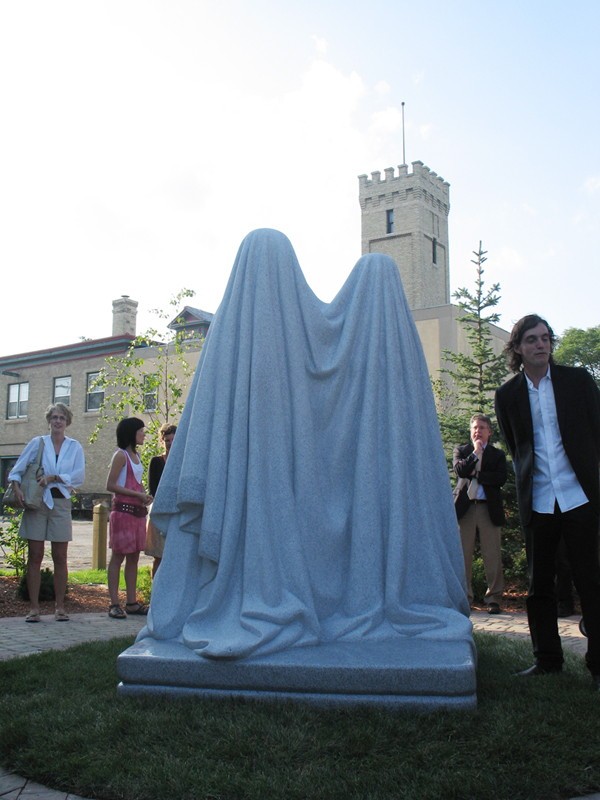The pillar problem
Artist Michel de Broin questions the structural integrity of Plug In ICA with Disruption from Within
Winnipeg art enthusiasts have not one but two chances to see the work of Montreal artist Michel de Broin this fall.
Last week, de Broin was in Winnipeg to open his new solo exhibition, Disruption from Within, at Plug In ICA. He also unveiled Monument, the inaugural sculpture for the Jardin de Sculptures at Le Maison des Artistes Visuels in St. Boniface.
Appropriating from traditional art methods, de Broin focuses on drapery in Monument. The piece started as an investigation into René Magritte’s Les Amoureux, where a couple kisses under a sheet.
“I’m interested in intimate space versus public space.”
The Plug In show goes in a different direction, though.
“When I was invited to show [at Plug In] I looked at the space as a problem I needed to deal with, and specifically that problem was the pillars,” de Broin said. “By removing the pillars, I opened up the space, but placed the gallery in a dangerous position because without them the ceiling would fall.”
In a series of oil paintings called Décolonnisation, de Broin illustrates a deconstruction of the interior of the gallery space by pulling down its pillars and then reusing them as sculptural elements.
In his third version of a piece called Shelter, de Broin creates a structure out of 10 tables he found in Winnipeg to create an assemblage, a form of sculpture comprised of found objects and arranged in such a way that they create a piece of art.
The tabletops in Shelter face inward. Presenting the tables in this new way creates an interesting dialogue for de Broin.
“This piece shows the tables’ underside, or dark side.”
Some of de Broin’s art applies technology in a playful way to make a point. In a piece called Keep on Smoking II, de Broin modified a bicycle to generate clean smoke, playing on the hypocrisy of the world’s recent green movement.
“Big companies pretend to make greener things, like clean burning coal and things like that, and really it’s not true,” he said.
De Broin said he feels more like a contractor than a visual artist at times and pushes the boundaries of what people might expect of an artist.
“During modernity, artists were hidden in their studios, but before that they were building cathedrals and acting as contractors – working with teams of people and making sure everything [looked] right. I do a lot of that,” he said.
When asked about his studio practices, de Broin said he’s uncomfortable with the fact that studios are places where artists get a bunch of tools together and those tools are tied to a particular place.
“I like to be free to choose any medium at any given time. Sharing studios with other artists permits this. They are often set up to make something different and we can collaborate.”
Published in Volume 64, Number 4 of The Uniter (September 24, 2009)







